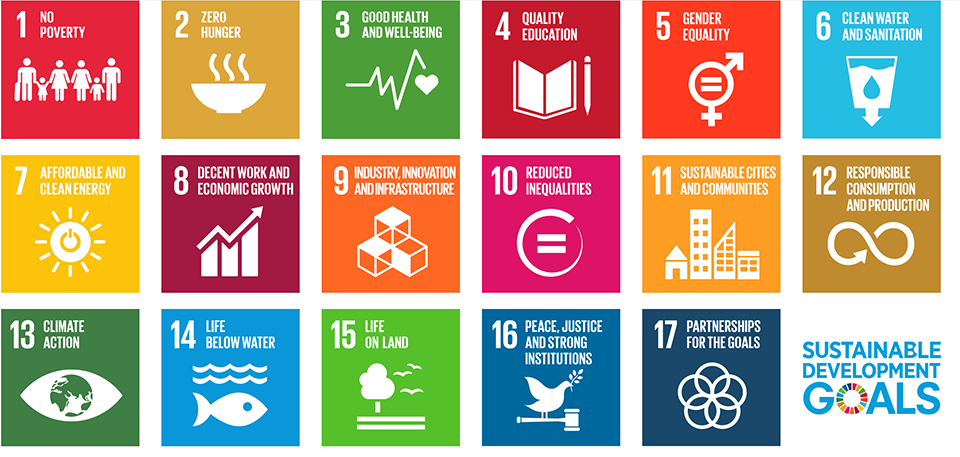April 2021 / INVESTMENT INSIGHTS
Impact Investing: Why It Matters Now More Than Ever
Equity markets are vital for driving environmental and social change.
Key Insights
- Concerns over environmental and social pressure points intensified during the coronavirus pandemic, accelerating the sustainability agenda and amplifying a focus on the impact of corporate activities.
- Many businesses are recognizing the need to make a more positive impact on the communities in which they operate. In our view, financial returns and enhanced sustainability can coexist to create value for both stakeholders and shareholders.
- Publicly listed companies are essential to delivering on global sustainability goals, while allowing investors to potentially gain from exposure to these trends.
The magnitude of change and disruption experienced around the globe in 2020 was remarkable on many levels. The coronavirus pandemic enveloped the world, prompting widespread upheaval to established patterns of conducting business, communication, travel, and the daily lives of people and communities. Amid the evolving crisis, we saw the tipping of pressure points around social inequality, elevating issues like diversity, health care, education, and equality higher up the political and business agenda. Meanwhile, the world witnessed more worrying manifestations of rising pressures on the environment created by human activity.
Why does this matter now, as the world begins to emerge from the pandemic? We believe extreme events of 2020 represent catalysts that will drive a new era of accelerated action by policymakers, businesses, and society alike. For all investors, understanding the implications for their investments is more important than ever. Indeed, many are seeking to make a more active and conscious choice to favor companies that show clear leadership in sustainability, environmental, and social issues.
Added Momentum for the Sustainability Agenda
Societal, governmental, regulatory, and fiduciary pressures for change on a range of environmental and social fronts have been building over time. The emergence of an agenda of broad and global governance change that should shape a broad spectrum of corporate activity is evident on many levels.
Compelled by social unrest and pressure from multiple angles, policymakers, capital allocators, and businesses have begun to move beyond tentative steps into much more material action to address the risks and engender change. For example, massive fiscal stimulus measures designed to promote an economic recovery from the pandemic‑induced downturn are commonly framed with green credentials. Company responses to the pandemic served to put the spotlight on employee treatment and inequities, generating demand for action.
Demand for Sustainability is Accelerating
The forces driving changes in corporate behavior and investment

For illustrative purposes only.
Greater pressure for social change is also influencing the way businesses structure and manage their workforce. Meanwhile, global action and treaties on climate change have hastened investment and innovation targeting cleaner energy, production methods, and transport. And consumers are shifting their spending habits according to heightened concern over environmental and social issues.
With momentum building, companies are moving to actively shift investments and policies to address distinct regulatory changes and environmental and societal pressure points. Either through compulsion or a desire to influence positive change, these trends are rapidly shaping the way companies behave, invest, and innovate.
Public Equity Markets Will Be Vital to Making an Impact
Ambitious international and local goals are being set on environmental and social initiatives to directly address risks and promote change. Among them are the UN Sustainable Development Goals (SDG), a globally recognized framework that aims to end poverty, protect the planet, and ensure prosperity. On its own, it is estimated that approximately USD 2.5 trillion of capital will be needed annually until 2030 to achieve the UN SDG objectives.*
If we aspire to accelerate these and other initiatives that target social and environmental transitions, it is essential to fund them at scale and in a liquid manner—so public equity markets will be critical to that effort. The enormity of issues like clean energy transition will not be possible without the backing of large and well‑funded publicly listed firms.
Excitingly, the opportunity to own businesses that create a positive environmental or social impact is greater than ever before in public equity markets, as companies should shift investment to address environmental and societal pressure points. Striving to be on the right side of this likely societal and environmental change creates a real opportunity to select stocks that convey a positive impact profile, and with it, the added return potential that this can bring.
United Nations Sustainable Development Goals
UN’s global framework to achieve a better and more sustainable future for all

Source: United Nations.
These goals, however, do not entail investing in companies that do good at the expense of financial returns. While sustainability of returns has always mattered in financial theory, an increased focus on a company’s impact profile offers a chance to invest in businesses with potentially new growth drivers through new or more sustainable activity. Stakeholder value and shareholder value are intertwined. Understanding and aligning the interests of businesses, shareholders, and society can give the opportunity to better manage risk and enhance a company’s competitive advantage.
Deciding Where and How to Make an Impact
We believe that impact investing is a vital tool for investors aiming to position themselves on the right side of societal and environmental change. Combined with fundamental analysis, deep research, and a valuation discipline, this investment style enables capital to be directly deployed into positive impact and change‑enabling companies.
Impact investing’s modus operandi is to try to generate positive, measurable social, and environmental impact, alongside an excess financial return when compared with recognized global equity indices (such as the MSCI All Countries World Index). This style goes beyond other categories of responsible investing, such as ESG integration or ESG screening. Impact investing directly aligns and measures investments according to their ability to contribute to particular social and environmental outcomes.
One way of targeting these types of impacts is to align and anchor investments according to the UN SDGs, as this provides a framework to identify pressure points and target the companies whose activities are working to address them. It creates an opportunity for investors to own a portfolio that addresses the breadth of UN SDGs and one that comprehensively encompasses critical environmental and social goals.
The potential investment opportunity set that the UN SDG opens is, however, vast and complex. This means an active, high‑conviction, and forward‑looking perspective is essential to screen, identify, and capture desired positive impacts and to target the financial returns they can generate.
The potential for enhancing the quality and quantity of the impact a company generates can be enhanced through active ownership. We are also resolute that it is an investment manager’s role to influence change through corporate governance monitoring and engagement. Large shareholders can move the sustainability debate forward by actively engaging with companies on issues that are material to their activities. But the journey to change takes time, making a long‑term investment horizon essential. Given the time required to achieve measurable environmental and social impacts, patience and resilience are key requirements to help monitor and evaluate the impact of change over time.
Impact Investing Is Part of Addressing This Generation’s Great Challenge
Addressing environmental and societal pressures with positive intent via an investment solution is just one part of this generation’s great challenge. Given this, we are committed to making our own contribution by using our research and resources to align the objectives of positive impact and financial returns. In this venture, a forward‑looking perspective and an imagination about change will be important for all stakeholders, especially as our world changes, likely evolving and expanding the impact universe as it does.
Like every nascent asset class, impact investing faces a hurdle of recognition as well as the need to work with companies and clients to ensure robust and transparent measurement of impact over time. Rather than wait for norms to be established, which can only happen when businesses adapt their disclosures, these challenges can be addressed through engagement with companies and through investment in our own capabilities. As asset managers proactively invest in capability to move the sustainability debate forward, we believe that impact investing will move into the mainstream of equity markets to ultimately sit alongside many other established styles and approaches.
Importantly, the move toward impact investing is being backed by an explicit choice of a growing population of investors who want to be part of global and sustainable solutions. Asset managers now have a unique opportunity to play a key role in helping deliver positive environmental and social outcomes that the world is increasingly seeking—aligning clients, investors, and business interests in the process.
IMPORTANT INFORMATION
This material is being furnished for general informational and/or marketing purposes only. The material does not constitute or undertake to give advice of any nature, including fiduciary investment advice, nor is it intended to serve as the primary basis for an investment decision. Prospective investors are recommended to seek independent legal, financial and tax advice before making any investment decision. T. Rowe Price group of companies including T. Rowe Price Associates, Inc. and/or its affiliates receive revenue from T. Rowe Price investment products and services. Past performance is not a reliable indicator of future performance. The value of an investment and any income from it can go down as well as up. Investors may get back less than the amount invested.
The material does not constitute a distribution, an offer, an invitation, a personal or general recommendation or solicitation to sell or buy any securities in any jurisdiction or to conduct any particular investment activity. The material has not been reviewed by any regulatory authority in any jurisdiction.
Information and opinions presented have been obtained or derived from sources believed to be reliable and current; however, we cannot guarantee the sources' accuracy or completeness. There is no guarantee that any forecasts made will come to pass. The views contained herein are as of the date noted on the material and are subject to change without notice; these views may differ from those of other T. Rowe Price group companies and/or associates. Under no circumstances should the material, in whole or in part, be copied or redistributed without consent from T. Rowe Price.
The material is not intended for use by persons in jurisdictions which prohibit or restrict the distribution of the material and in certain countries the material is provided upon specific request.
It is not intended for distribution retail investors in any jurisdiction.

